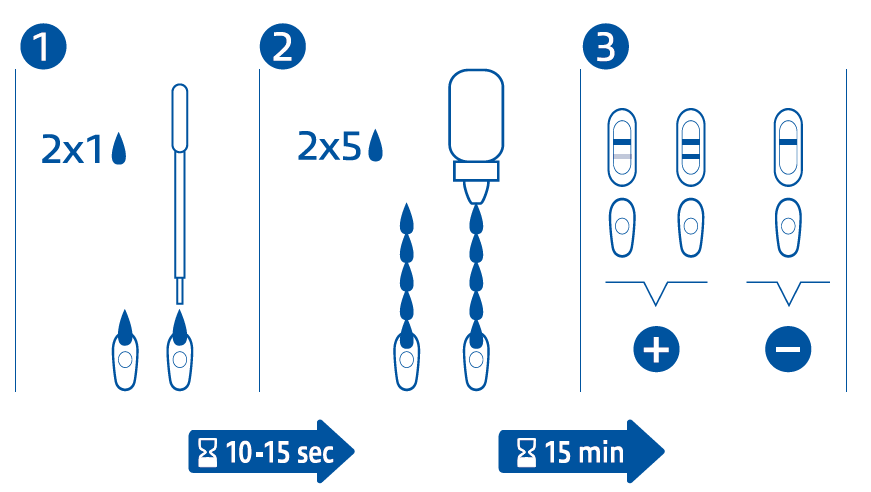Speed Duo FeLV/FIV
Rapid combined detection of FeLV antigens and anti-FIV antibodies
| Presentation | Advantages | |||||||
|---|---|---|---|---|---|---|---|---|
|
Method: Membrane Immunochromatography Analysis: Combined detection of P27 FeLV capsid antigen and antibodies directed against the GP40, an envelope glycoprotein of FIV Sample: Whole blood with anticoagulant, plasma or serum Preparation: 2 minutes Reading: 15 minutes Storage: 24 months at room temperature (+2°C to +30°C) Presentations: 6 tests, 20 tests, 50 tests Reliability: Compared with the reference methods:
|
|
| Why to use Speed Duo FeLV/FIV ? |
|---|
|
Moreover, the clinical phase is preceded by an asymptomatic phase. Early detection and correct differential diagnosis may be critical for the course of the disease. Regular screening of cats infected with FeLV is considered as the best means of fighting against the virus (2). Depending on the regions affected, studies show variable The detection of soluble viral antigens makes it possible to determine an animal's status even when there is a very low viral load in the blood specimen (early infection, transient viraemia, sequestrated infection). The mean seroprevalance of FIV ranges from 4% to 66% and is around 40% in certain populations of at risk cats (stray cats, unneutered/unsprayed cats...). Detection of specific antibodies directed against FIV makes it possible to determine the precise immune status of the cat. |
| When to use Speed Duo FeLV/FIV ? |
|---|
|
Speed Duo FeLV/FIV is well adapted to the regular monitoring of the FeLV and the FIV status. It can be proposed at the annual visit, before surgery and more commonly following suspicion of exposure to the virus. In multi-cat environments, the determination of the status of new arrivals can be used to prevent non-infected cats from being exposed to the virus. An animal's status for FeLV can be tested 28 days after potential exposure to the virus (interval between infection and viraemia). An animal's status for FIV can be tested 60 days after potential exposure to the virus (interval between infection and presence of detectable antibodies). Speed Duo FeLV/FIV is recommended prior to vaccination against FeLV, to prevent vaccination failure (2). |
Instruction for use
Bibliography:
(1) HARTMANN K. et coll. Quality of different in-clinic test systems for feline immunodeficiency virus and feline leukaemia virus infection. Journal of Feline Medicine and Surgery, 2007, 9, 439-445
(2) LEVY J. et coll. Report of the American Association of Feline Practitioners, 2005
(3) CACHON T., CHUZEL T. Epidémiologie, pathogénie et symptômes de la PIF. Point Vétérinaire, 2005, 254, 18-21
Websites
ABCD-VETS : European Advisory Board for Cat Diseases
The European Advisory Board on Cat Diseases (ABCD) aims to issue guidelines on the prevention and management of feline infectious disease in Europe.

Recommendations of ABCD Vet for FeLV
Recommendations of ABCD Vet for FIV
AAFP : American association of Feline practitionners
The American Association of Feline Practitioners improves the health and well-being of cats by supporting high standards of practice, continuing education.


 Infection with the feline leukemia virus (FeLV) causes variable and poorly specific symptoms, which make laboratory testing essential for the diagnosis. The differential diagnosis includes other viral immunosuppressive diseases, as FIV and feline coronavirus.
Infection with the feline leukemia virus (FeLV) causes variable and poorly specific symptoms, which make laboratory testing essential for the diagnosis. The differential diagnosis includes other viral immunosuppressive diseases, as FIV and feline coronavirus. prevalences from 1% to 20%.
prevalences from 1% to 20%.
